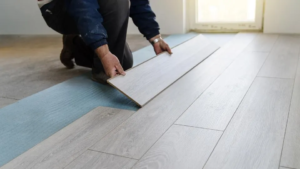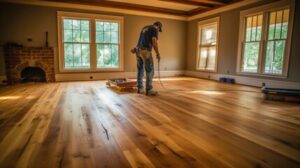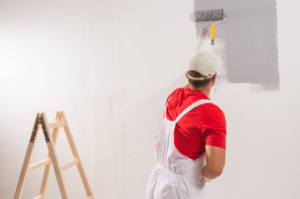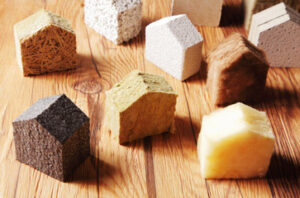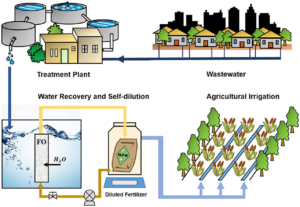Plumbers Lexington work on plumbing systems that take away waste water, provide hot and cold running water, and regulate indoor climate. They install and repair these systems in homes, buildings, and public facilities like hospitals.

A plumber needs to have excellent customer service skills and a good understanding of industry practices and building codes. They also need to be physically strong and have good manual dexterity.
A leak detection system is a device that meticulously tracks the water flow through a pipe, then shuts off the water supply in response to any changes. This type of device is designed to give homeowners peace of mind and protect their homes from catastrophic damage and jaw-dropping repair bills.
These devices typically have sensors that are wired to a valve along the water line. Once the sensor detects water, it closes the valve, cutting off the flow of water to the system. These systems can also be installed on appliances like water heaters and dishwashers, to prevent water waste.
There are several types of leak detection technology available, including LiDAR (light detection and ranging), a powerful laser-based technology that can create high-resolution maps of areas with accuracy. It’s capable of detecting structural changes and locating leaks with a great deal of detail, making it an extremely valuable tool for plumbers.
Another type of leak detection is sonic, which uses sound to locate the source of a leak. This technique is able to detect the distinct noise that escapes from a leaking pipe under pressure, which sounds like a hissing or whooshing sound. It’s a highly effective tool for finding leaks in hard-to-reach places, such as under concrete slabs.
Leak detection systems can also be installed on pipes that are at risk of freezing, as they are able to detect when water temperatures drop below freezing levels. This can prevent costly plumbing repairs and potential flooding when the pipes thaw out.
Regularly checking for wet spots around the home is a good way to spot leaks, as it’s often an early warning sign of a problem. If you notice a damp spot on the floor or walls, it’s a good idea to contact a plumber for an inspection. It may save you a costly repair bill, or even more catastrophic damages like mold and mildew. Be sure to check your water heater periodically, and be on the lookout for puddles near your dishwasher or refrigerator’s ice-making unit. These could be signs of a slow leak or a major burst pipe that’s causing extensive water damage.
LiDAR
Light detection and ranging (LiDAR) is a measurement technique that uses lasers to scan structures. It works by bouncing laser light off the surface and measuring the time it takes to return to the sensor. This information can be used to determine the distance of the scanned structure. LiDAR technology has been used as a compliment to CCTV for the inspection of sewer pipes as part of trenchless rehabilitation projects.
Unlike CCTV that produces an illuminated “ring” around the pipe, a LiDAR survey produces a continuous 3D point cloud of the entire pipe wall. This allows for a more accurate assessment of internal diameter and material loss. This information is also useful when evaluating the effectiveness of a sewer pipe rehabilitation project.
When paired with a gyroscopic alignment, a remote LiDAR survey can provide a full 3D model of an underground pipe. This information can be compared to the original As-Built drawings to detect any deflections that may have occurred. This allows municipalities to accurately forecast capital improvements and prevent costly surprises down the road.
LiDAR technology has been used in a variety of different applications, from agriculture to archaeology to autonomous vehicles. However, few studies have focused on terrestrial LiDAR data to detect, model, and analyze buried infrastructure in an unstructured industrial environment. This is largely due to the challenging nature of registration, the sparseness of the point clouds, undue clutter from vegetation or dirt/rubble, unforeseen occlusions, and indiscriminating surfaces.
Thermal Imaging
As the name suggests, this type of camera detects thermal radiation, which is invisible to the human eye. The camera then converts the thermal energy into a visible light display. This allows plumbers to see where there may be leaks and moisture penetration in structures without having to break walls or make a mess. It also helps to find the source of a problem, so that it can be quickly repaired and avoid further damage.
The cameras can be used to spot a range of problems, including overheated equipment and insulation failures. They can even identify water leaks hidden behind walls and under floors. This makes them particularly useful for plumbing predictive maintenance inspections, as they can identify potential problems before they cause major damage.
A clogged drain or water leak can have serious consequences for a building or structure, but they are not always easy to locate. The infrared imaging technology built into many of these cameras can show where the problem is located, making it easier to pinpoint the source of the issue and get it fixed as soon as possible.
These devices can also help to save money on repairs by avoiding unnecessary excavation and demolition. For example, if a pipe has a clog and is causing water to overflow from a sink or toilet, it can be very expensive to tear up an entire room to find the source of the problem. Infrared imaging can identify the exact location of the clog or leak and prevent the need to destroy large sections of the property to find it.
If a leak or clog is caused by water or moisture penetration, a plumber can use the infrared imaging camera to see where it is in a wall or ceiling, so that the correct repair materials can be used. It is especially useful for locating leaking water in walls or underneath flooring, where it can be hard to reach.
A basic model of a thermal imager can be bought for around $230. This model will allow a plumber to see blocked pipes and heating pipes behind plaster walls, as well as water leaks under a concrete floor. It is not a substitute for a full home inspection, but it can be a valuable add-on service and provide added peace of mind for a homebuyer.
Infrared Cameras
A thermal camera (also known as an infrared camera, thermal imager, or IR camera) creates an image by recording infrared radiation as it is emitted from an object. The image is then displayed on a screen, similar to the way a normal digital camera works. Thermographic cameras are generally divided into two categories: cooled and uncooled. Cooled infrared cameras capture more of the infrared spectrum than their uncooled counterparts, which gives them superior image quality.
The infrared sensor inside a thermal imaging camera contains thousands of pixels that respond to the infrared energy focused on them by emitting an electronic signal. The sensor’s processor analyzes these signals and assigns them a temperature value for each pixel. The resulting matrix of colors is sent to the camera display and produces the final thermal image. Some cameras use a color palette to help technicians interpret the images and locate problem areas more quickly.
While the images produced by an IR camera may be monochrome, some models can also produce a pseudo-color display by using density slicing to highlight areas of interest. This technique combines multiple pixels and assigns each of them different intensities to display the information in an easily digestible manner for humans.
An infrared camera can detect a variety of objects that radiate heat, including humans and other warm-blooded animals. The technology is used by veterinary and animal health professionals to identify infection and illness, as well as by electrical contractors and building inspectors to detect deterioration and other dangers.
Most IR cameras come with software that enables users to perform basic image analysis and generate reports. Those with additional features such as voice annotation, automated functions, resolution enhancement, and Wi-Fi or Bluetooth connectivity can streamline the process of recording and analyzing thermal images. These advanced capabilities open the door for more efficient and customizable IR inspections, as well as predictive maintenance programs. In addition to reducing the time needed for a repair job, these tools can also help reduce costs by identifying problems before they become more serious. As the technology continues to improve, it is likely that more plumbers will adopt IR imaging into their workflow.
